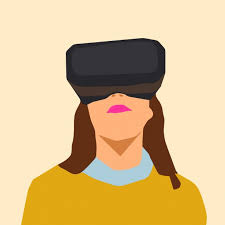Course Title: Introduction to Digital Humanities (course number TBD)
Description: In this course, students will develop a basic understanding of digital humanities (DH) tools and methods. Students will not only be asked to investigate the foundations of digital humanities as a field, but also begin to develop practical skills in utilizing digital tools related to web development, archiving, editing, data mining, network analysis, and mapping. Students will be asked to develop a project tied to their own discipline using one or more of these tools or methods.
Overall Course Goals:
- Students will be able to define the digital humanities and outline the main methodologies of the discipline.
- Students will learn how to navigate a variety of digital humanities tools and software to produce digital projects.
- Students will be able to articulate how the digital humanities is applicable to their own subject area and identify how DH is used in their field.
- Students will complete a digital project on a humanities topic of their choosing using tools related to archiving, editing, data mining, network analysis, or mapping.
Type of Course: This course will be a hybrid course. The majority of course content will be distributed online, and students will be asked to meet as a group once weekly in order to discuss course activities and troubleshoot or workshop digital projects.
What will be easy for creating this course: In my previous job, I managed the Digital Humanities minor curriculum which included a variety of courses related to DH from many disciplines (we did not have a specific introduction to DH course), so I have experience coordinating DH curriculum. Additionally, DH scholars and educators are very open to sharing course ideas and syllabi, so I should be able to explore examples of what has or has not worked in other courses of this type. I also feel that the technology-focused nature of DH is conducive to online learning, while the ability to create a hybrid course also ensures that face-to-face humanities based discussions and project workshopping can still be included.
What I’m nervous about/think will be difficult: I’m primarily nervous about the scalability of the course. Ultimately, many DH projects and resources can be dictated by university support, and while big universities like MSU might able to support an online platform for the course, subscriptions to certain tools and services, or server space, this may not be the case for many institutions. In terms of course content, I’m concerned about the amount of trial and error that needs to happen when tinkering with DH problems. How can I navigate the necessity of students potentially failing at using a particular tool or method while still having to assign a grade? I think it will be difficult for some undergraduate students to understand this. I also fear that while many humanities students are comfortable with the technology they use regularly, they will struggle with the fact that there will be a lot of situations in which they feel unsure using digital tools that are unfamiliar to them.
Relevant information:
- Potential texts:
- Digital Humanities 101, Johanna Drucker: http://dh101.humanities.ucla.edu/
- Digital_Humanities; Anne Burdick et al.: https://archive.org/details/DigitalHumanities_201701
- Digital tools:
- WordPress: https://wordpress.com/
- Voyant: https://voyant-tools.org/
- Omeka: https://omeka.org/
- Scalar: https://scalar.me/anvc/scalar/
- Gephi: https://gephi.org/
- StoryMap JS: https://storymap.knightlab.com/
- Tableau: https://www.tableau.com/
- Other intro to DH classes:

